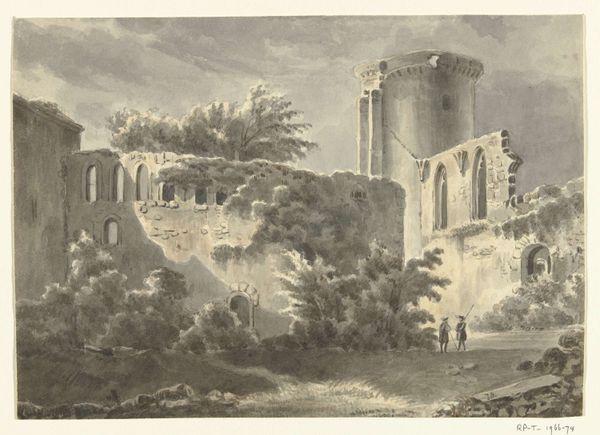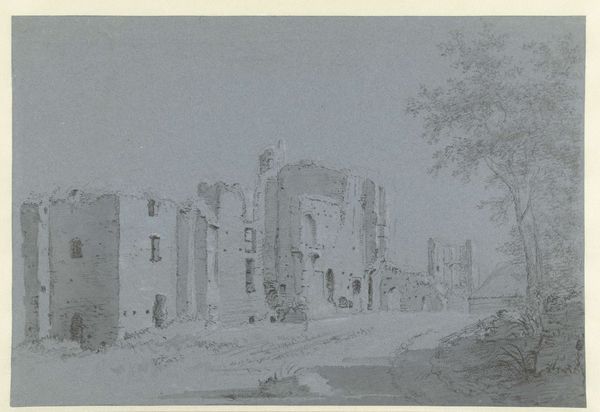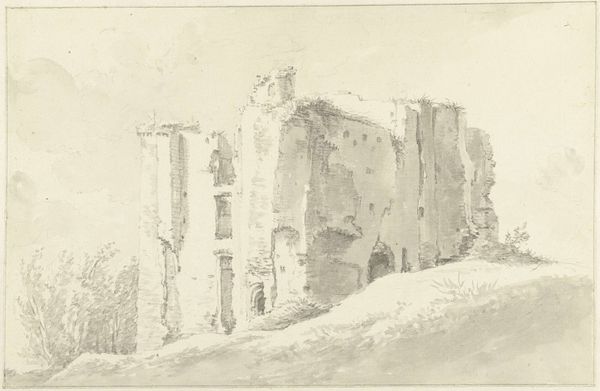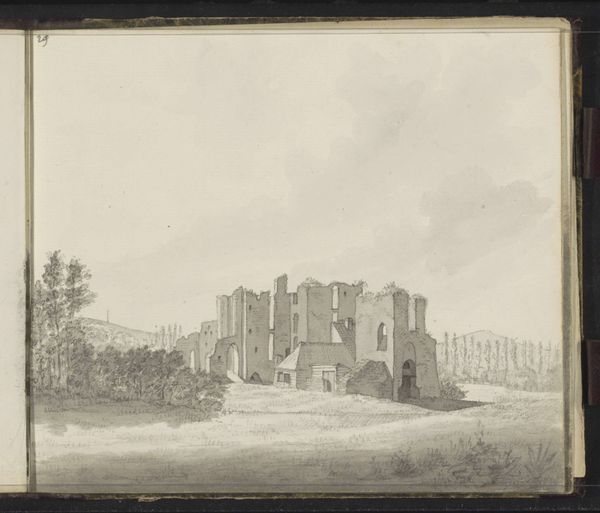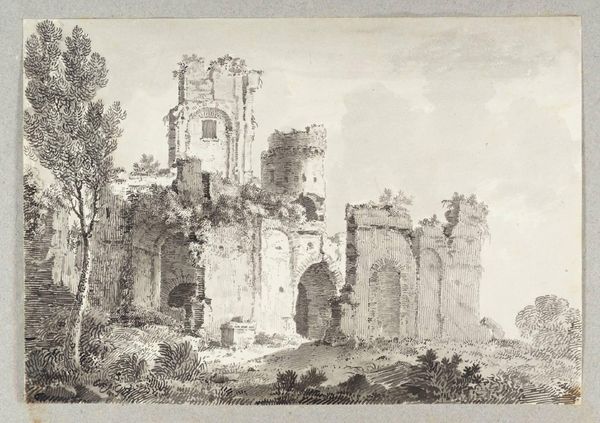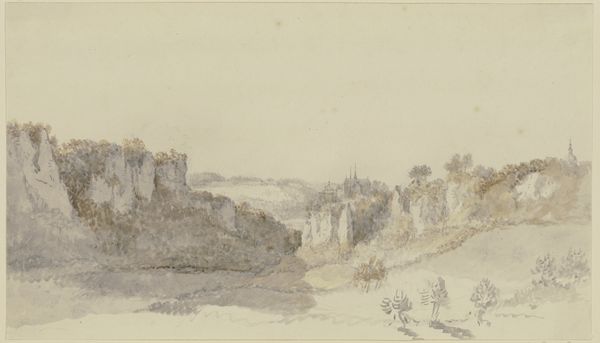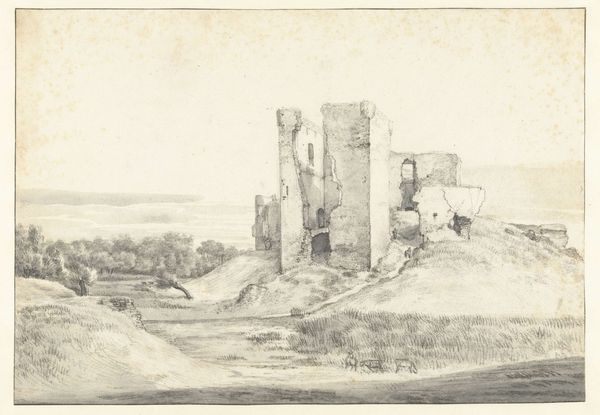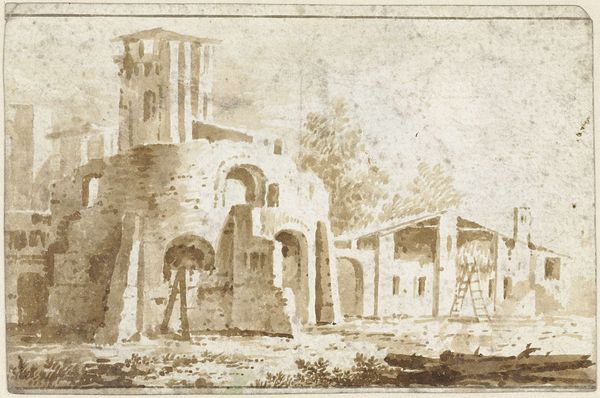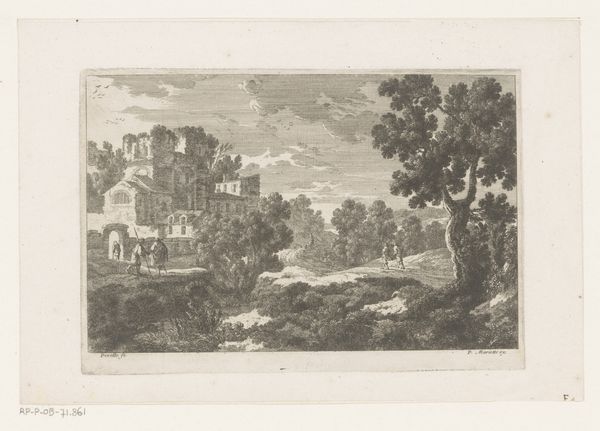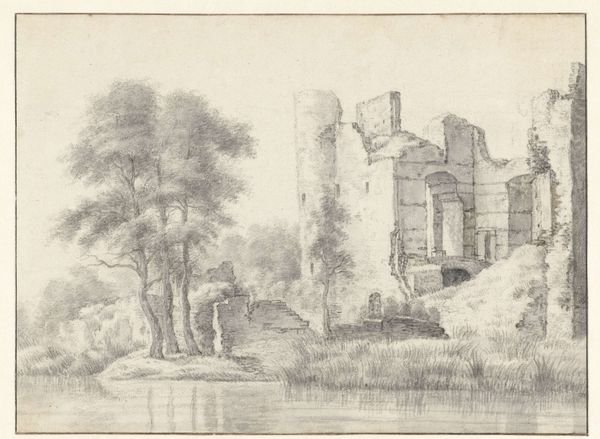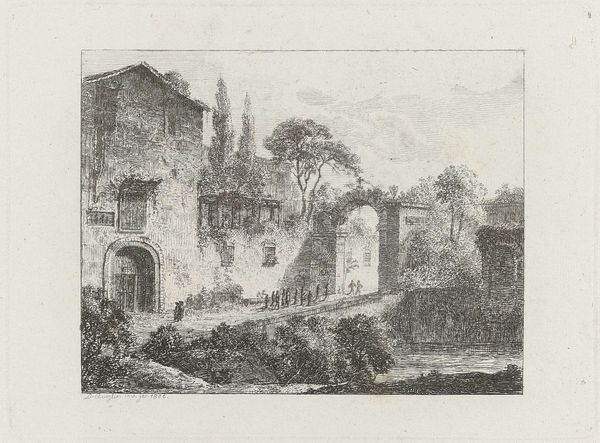
drawing, watercolor
#
drawing
#
landscape
#
watercolor
#
romanticism
#
cityscape
#
watercolor
Copyright: Public Domain: Artvee
Editor: This is J.M.W. Turner’s "Buildings Overlooking Water, near Naples," a watercolor from around 1796. It feels so serene, almost ghostly, with the limited color palette. What symbols do you see in it? Curator: I see a dialogue between permanence and transience. The architecture speaks of human ambition, a desire to create lasting structures, of course. Yet the watercolor medium, with its fluidity and delicate washes, introduces a sense of ephemerality, hinting at the inevitable decay of even the grandest designs. The arches themselves – think about their symbolic resonance as gateways. What might they signify here, at the edge of the water? Editor: A transition? Maybe from the known world into something new? Curator: Perhaps. Water, in art, often represents the unconscious, the flowing, changeable aspects of life. Here, it almost seems to encroach on the architectural certainty. Consider the trees as well. Notice how they frame the building? Editor: Yes, but their organic forms contrast so strongly with the rigid geometry of the architecture. It feels deliberate. Curator: Precisely. The Romantics, of which Turner was one, were fascinated by the power of nature, by its ability to overwhelm even the most impressive human creations. The trees here act almost like silent witnesses, reminding us of the enduring power of the natural world. Even their placement holds significance. They both obscure and reveal, drawing our eye to specific elements of the architectural structure while also partially concealing its totality. It creates an intriguing tension. Does that symbolism of fragility versus durability affect your understanding of the artwork now? Editor: Definitely. I didn't appreciate the depth of symbolic meaning before, the contrast between permanence and transience, and how those two concepts are connected. Thank you for sharing these insights. Curator: And thank you for prompting a closer look. It’s these dialogues between viewers and artworks that keeps their cultural memory alive, don’t you think?
Comments
No comments
Be the first to comment and join the conversation on the ultimate creative platform.
